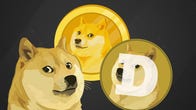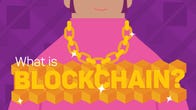[ad_1]
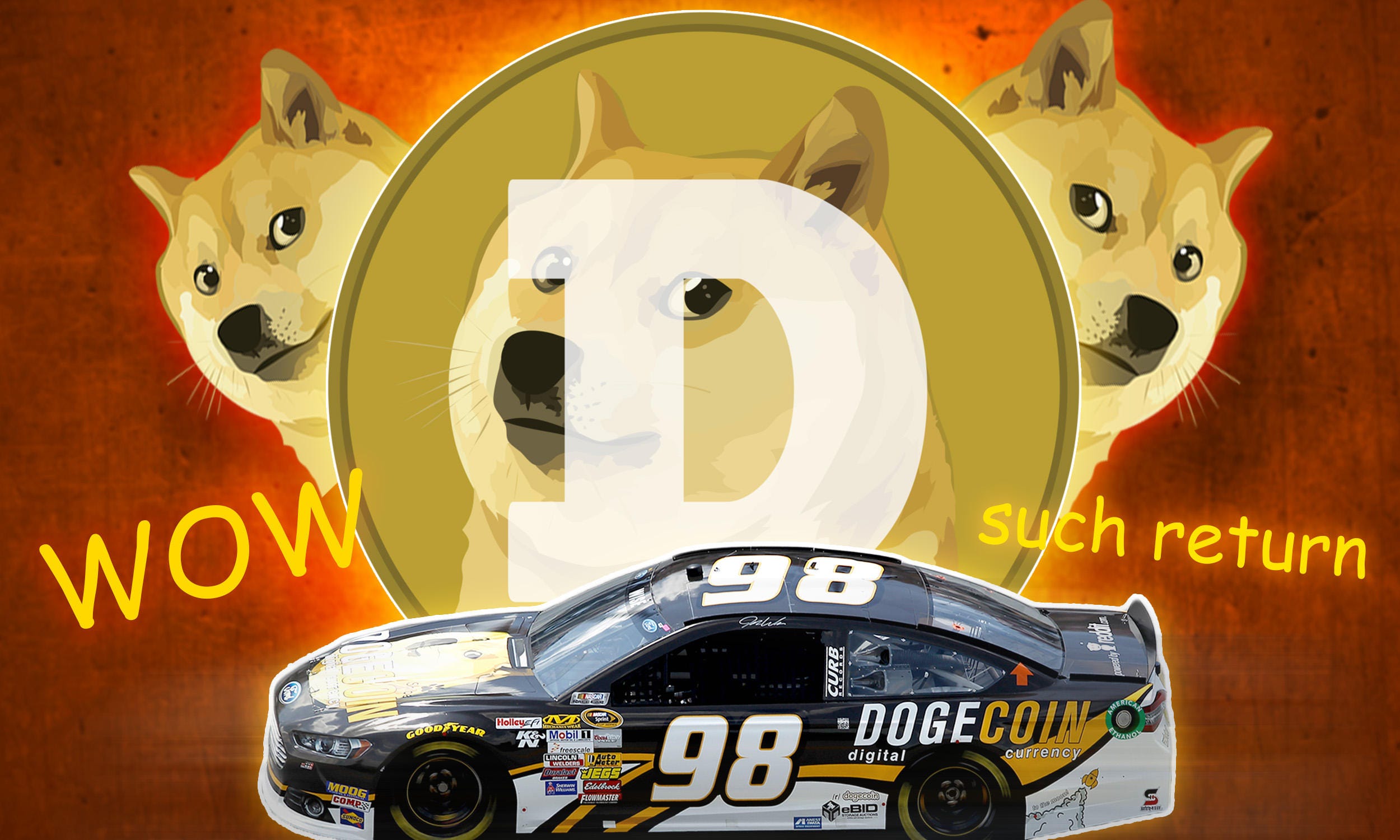
June 22, 2014. Jackson Palmer, a self-identified “common geek,” is excessive within the stands at a Nascar race on the Sonoma Raceway in California. He’s an Australian man in his 20s. He has zero curiosity in racing. By no means in his wildest desires did he think about it could come to this.
He surveys the scene.
Beneath him: an incredible crowd. The overwhelming blare of engines. Hurtling spherical at super speeds: the #98 Moonrocket, a high-performance racing automobile. No completely different from the opposite vehicles on the monitor, aside from one essential element.
On the bonnet of the automobile: a canine. A Shiba Inu, extra generally often known as a “Shibe,” the canine made well-known within the Doge meme that was widespread in 2013.
Emblazoned on prime: the phrase “DOGECOIN” in all caps. Beneath: “digital forex”.
Palmer describes the scenario utilizing phrases like “loopy,” “surreal” and “nuts.” He remembers this second as a “actuality examine.” Dogecoin was a tweet, then it was a cryptocurrency price cash in the true world. Six months later, he watched as a joke that he’d made in passing in some way manifested itself into one thing tangible. A Dogecar in full flight.
It reminded Palmer how insane the world might be.
That is the story of Dogecoin, the joke that grew to become too actual for its personal good.
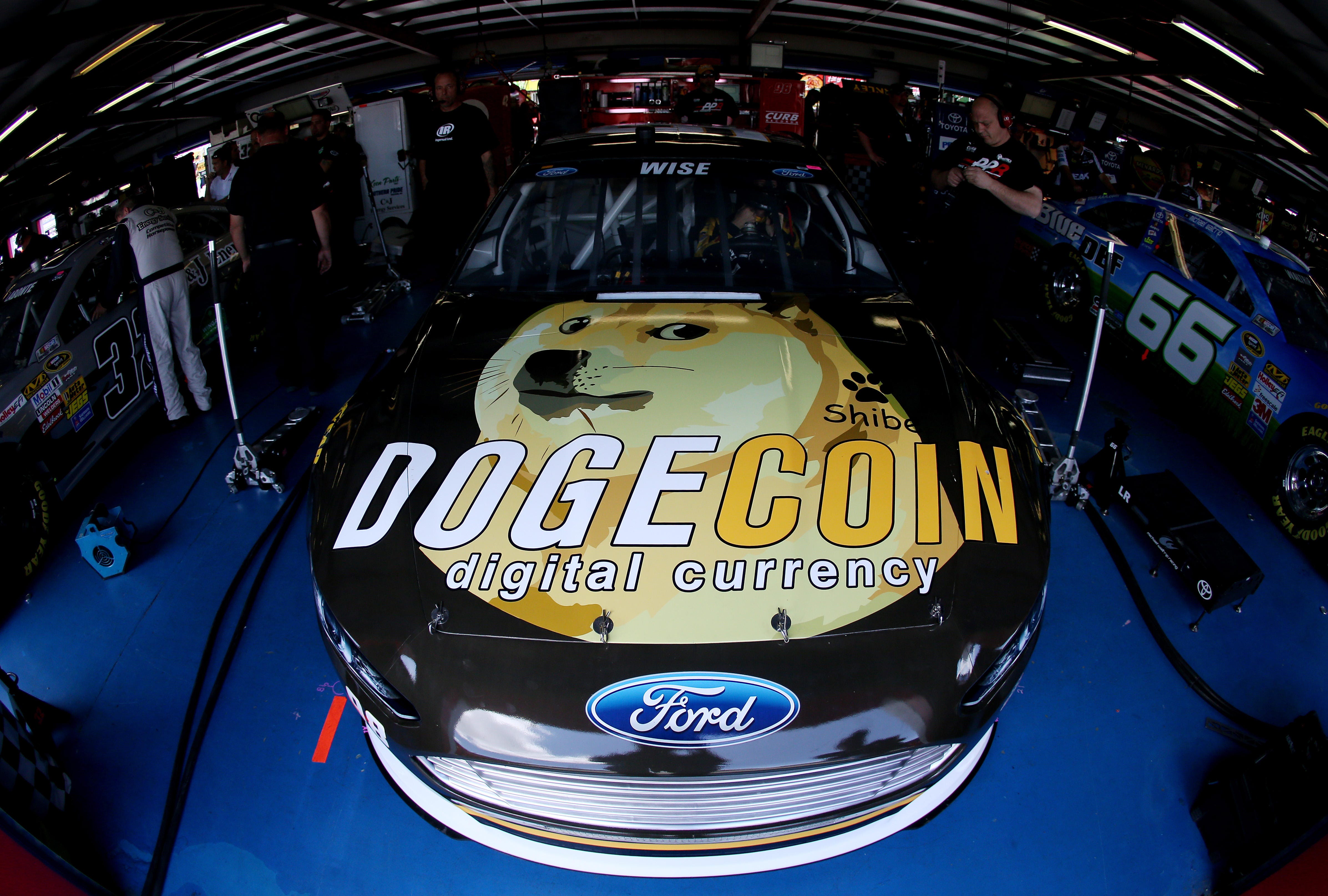
The Dogecar, in all its glory.
Chris Graythen / Getty Photos
The subsequent huge factor
Dogecoin is a cryptocurrency, a type of digital cash that, very like bitcoin, permits peer-to-peer transactions throughout a decentralized community. One essential distinction: bitcoin is the unique blockchain proof-of-concept. Bitcoin is ground-breaking. Bitcoin is (some imagine) world-changing tech with the potential to remodel how cash works within the twenty first century.
Dogecoin is a digital coin with an image of canine on it.
“It’s a puzzle to me why Dogecoin is so extremely valued,” says Adrian Lee, a senior finance lecturer on the College of Expertise in Sydney.
Dogecoin is presently price $80 billion. It is tough to make sense of that.
“Dogecoin is an simply replicable coin,” Lee stated. “I do not know the way it distinguishes itself from Bitcoin. I actually suppose it has to do with being established early.
“And likewise the canine.”
If you happen to’ve spent any time on the web over the last decade, you’ve got in all probability heard of the Doge meme. The enduring Shibe, his inside monologue expressed in comedian sans with damaged modifiers: “so scare,” “a lot noble,” “wow.”
At the peak of the meme’s popularity near the tail end of 2013, Palmer, an Australian marketer for one of the world’s largest tech companies, made a joke combining two of the internet’s most talked-about topics: cryptocurrency and Doge. It was a joke taking aim at the bizarre world of crypto and bitcoin’s multiple derivatives.
“Investing in Dogecoin,” Palmer tweeted, “pretty sure it’s the next big thing.”
The tweet got a lot of attention.
For laughs, Palmer decided to keep the joke going. He bought the Dogecoin.com domain and uploaded a photoshopped Shibe on a coin.
He left a note on the site: If you want to make Dogecoin a reality, get in touch.

Animal Crossing, featuring the in-game currency “Bells”.
Nintendo
The bell tolls
On the other side of the world, Billy Markus, a video game-obsessed software engineer at IBM, saw Palmer’s note. He’d just finished “Bells”, a project he was working on in his spare time.
Bells was a cryptocurrency named after money used in the Nintendo game Animal Crossing. It was 2013, the original crypto gold rush. Markus saw that bitcoin’s code was open-source. He decided to take a weekend and do something weird. He tried to create his own cryptocurrency for “sillies,” as he put it.
Bells was weird as hell. The major difference between Bells and regular cryptocurrencies was the rewards: they were completely random. If you mined bitcoin, using a decently powerful home computer, the rewards were consistent.
If you mined Bells, there was no telling whether the reward would be one Bell or 500 Bells.
And that’s because Bells wasn’t meant to be serious, it was a digital currency based on a video game about animals who live in a village and go fishing together.
The cryptocurrency community didn’t really get the joke.
“People were just trashing it,” laughs Markus, who quickly discovered there was very little crossover between crypto-obsessives and gamers.
“I was like alright, I retire,” says Markus. “I don’t need to do this anymore.”
But then Markus read Palmer’s message on Dogecoin.com. That was the moment Billy Markus decided to come out of crypto retirement.

Alain Pitton/NurPhoto via Getty Images
Ctrl+F bitcoin
When Palmer didn’t immediately respond to Markus’ offer to help build Dogecoin, he started working on it anyway.
“Dogecoin,” says Markus, “from ‘that seems like it’s funny’ to actually doing it, took about three hours. It’s almost trivial to create a new cryptocurrency.”
It was a find-and-replace job.
Ctrl+F ‘Bitcoin,’ replace with ‘Dogecoin.’
Markus freely admits to finding large chunks of bitcoin’s source code completely incomprehensible, but knew enough to change a few core elements for Dogecoin. For example, Markus created 100 billion dogecoins (as opposed to bitcoin’s 21 million) and made them easier to mine. (Dogecoin is already close to being mined out, while bitcoin’s final coin will be mined in 2140.)
He changed the font (to comic sans of course) and changed every mention of the word ‘mine’ to ‘dig’ (because dogs don’t mine, they dig…).
And then, during his lunch break, Markus set Dogecoin live.
Moving at light speed
Premining: the act of gathering cryptocurrency before launching your coin into the public domain. Almost everyone serious about launching a cryptocurrency does this.
But Markus and Palmer didn’t premine any Dogecoin. Because they weren’t serious about launching a cryptocurrency.
“We thought it was this big joke that would die off,” laughs Palmer.
And according to Markus, Palmer wasn’t even sure how to mine a cryptocurrency.
Markus had a relatively powerful gaming PC, with two graphics cards, so he was officially the first person to mine Dogecoin. But given the the nature of mining (which gets increasingly difficult as the currency is mined) Billy’s computer was no longer powerful enough to mine Dogecoin after about five minutes. Markus split what he’d mined 50-50 with Palmer and that was that. Both got about $5,000 of Dogecoin.
And that’s all the Dogecoin either man would ever own.
In online crypto circles, Dogecoin became popular very quickly. Forum threads moved rapidly. The name Dogecoin echoed throughout dark corners of the internet.
But Reddit was almost certainly the main driver in Dogecoin’s rapid rise to crypto stardom. The Dogecoin subreddit exploded almost immediately, and with that explosion came the infrastructure any cryptocurrency needs if it is to become successful: mining pools, services.
“It was moving at light speed,” explains Markus. “Within minutes we were like, ‘Wow, this is way out of our control.”
But it was the Reddit “tipping bot” that drove Dogecoin into the stratosphere.
If a user posted something to the effect of, “hey ‘dogebot’ tip this person five dogecoin,” that Reddit user would automatically receive five Dogecoin. People were sending Dogecoin back and forth in a feel-good exercise that cost very little money in real-world terms.
“I liked it,” says Markus. “At the time, Dogecoin wasn’t worth anything, but getting five Dogecoin felt better than getting two cents.”
Reddit users were sharing Dogecoin back and forth constantly, which expanded the user base of Dogecoin and, as a result, increased its value as a cryptocurrency.
“Pretty much everyone who used Reddit had Dogecoin,” says Palmer. “I think that was key to its success.”
The 2014 Jamaican bobsled team, holding Dogecoin t-shirts.
Crowdtilt
A force for good
January 2014. Jackson Palmer is already three drinks deep at a trivia night at his local pub in Sydney. His phone starts buzzing. It doesn’t stop buzzing.
Earlier that night, Palmer and the Dogecoin community had brainstormed a ridiculous (but completely brilliant) idea.
For the first time in a decade, Jamaica’s bobsled team had qualified for the Winter Olympics, but it didn’t have enough money to attend. As huge fans of the comedy “Cool Runnings,” Palmer and the Dogecoin crew decided to do something about it.
They chucked up a Dogecoin address onto the subreddit and asked for donations. Hours later they’d raised $25,000.
That’s when Palmer’s phone started vibrating off the hook.
“I was like, ‘Quick we need to get back to our computers,'” laughs Palmer.
So Palmer and friends stumbled home from the pub, picked up a six-pack of beer for good measure and set about figuring out how to send 26 million Dogecoins to the Jamaican bobsled team.
It was a gesture that symbolized the early spirit of Dogecoin.
In Markus’ words, they were allergic to the word “invest.” Both Palmer and Markus donated all their Dogecoin to these massive charity initiatives. They helped build water wells in Kenya and raised money to help train assistance dogs for autistic children.
“We wanted to create something that was a force for good,” explains Palmer.
But as the community grew, the initial spirit in which Dogecoin was launched was difficult to preserve. People started to care about the price of Dogecoin. They were literally and figuratively invested in it.
And that terrified Markus.
“I don’t mind if someone spends ten bucks and gets some Dogecoin,” says Markus. “It’s like buying a movie ticket or something, that’s fun.
“But when someone puts $20,000 in? That makes me really, really uncomfortable.”
Markus began clashing with members of the community. For him, Dogecoin was still crypto “for sillies,” but here it was ballooning into a currency people were trading for real money. In his view Dogecoin was a silly thing that should remain silly. Many in the community disagreed.
Eventually he decided enough was enough.
“I was like, “Okay, this is dumb. I don’t want to be the leader of a cult.””
Markus decided to bail on Dogecoin.
Moolah
It was Moolah that pushed Dogecoin to the brink.
Palmer describes it as “PayPal for cryptocurrency.” From the very beginning, Palmer was cynical.
Run by a British man calling himself Alex Green, Moolah was a cryptocurrency exchange designed to help people buy and sell Dogecoin. They infiltrated the Dogecoin community with startling efficiency.
Alex Green began by doling out Dogecoin in exchange for upvotes on the Dogecoin subreddit. He also donated generously to charitable causes the community were involved in, like $2,500 to a cancer charity, or $3,000 to help get the Dogecoin Nascar vehicle on the track.
The community loved it. Soon Moolah began hiring people from the Dogecoin community for key positions in the company.
“Alex Green started building his business on top of Dogecoin,” says Palmer.
Markus, watching from afar, wasn’t a fan.
Despite removing himself from the day-to-day workings of Dogecoin, Markus attended a Dogecoin convention, organized in part by Palmer. He wanted to catch up with some of the old gang. By chance, he ran into representatives from Moolah, who were at the bar guzzling Cristal at $200 a bottle. They poured a glass for Markus.
“I was really uncomfortable,” remembers Markus. “I said, ‘whatever’s going on here I just don’t want any part of it.'”
“I just passed the glass to someone else.”
Many key figures in the Dogecoin community shared Markus’ suspicions, particularly Palmer, who was wary of Moolah from the beginning. But when concerns were raised they were mostly shouted down by a community that enjoyed the free currency being sent their way.
Later Moolah began soliciting the Dogecoin community for investment dollars and plenty donated Dogecoin to the cause. Why not? Moolah had been generous in the past. It made sense to repay the favor.
Moolah received over $300,000 from the Dogecoin community, across three separate rounds of investment.
And then it all came crashing down.
Months later, October 2014, Moolah went completely bankrupt. The Dogecoin community would end up losing every single cent they’d invested.
The situation got worse. An ex-girlfriend of Green got in contact with Palmer and other members of the Dogecoin community. She revealed that Green was actually Ryan Kennedy, who was notorious in the UK anime community for running companies terrifyingly similar to Moolah.
Suddenly the UK police were involved. After a three-year investigation, Kennedy faces multiple charges of fraud and money laundering. At a preliminary hearing in Bristol Crown Court on September 2017 he denied all charges. A request for comment was sent to Kennedy’s Defence Lawyer, but we’ve yet to receive a response.
But Kennedy had to answer to more serious, disturbing crimes. In May 2016, he was tried and convicted on three counts of rape with three separate women. According to press reports he smiled as he was being led from court.
“Ryan Kennedy convinced his victims they had no choice but to do as they were told,” said senior prosecutor Ben Samples. “He was emotionally, sexually and physically abusive, putting his needs above all else.”
Ryan Kennedy is currently serving an 11-year sentence in a UK prison.
Remember this moment
In the months after Moolah’s bankruptcy, Palmer struggled. He distanced himself from Dogecoin. From the community. From cryptocurrency as a whole.
“The energy I was putting into it wasn’t helping me from a mental health perspective,” he explains.
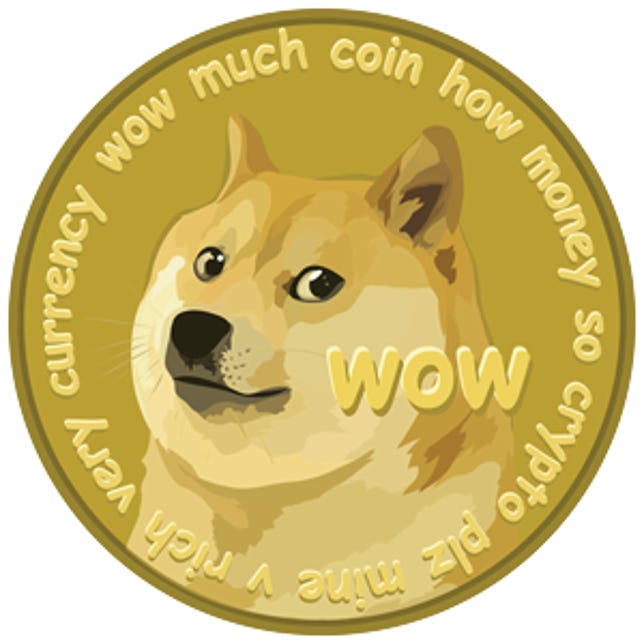
The famous Dogecoin. Much cryptocurrency.
Dogecoin
Like Markus, Palmer decided to bail on Dogecoin.
Palmer has re-emerged on the cryptocurrency scene. He now runs his own YouTube channel. He has no interest in launching another cryptocurrency and has little to do with Dogecoin. He calls himself a crypto skeptic. “Cryptocurrency is a solution in search of a problem,” he says.
What problem did Dogecoin solve?
“I don’t think it solves anything,” he says. “If anything, it exists as an educational tool. It’s a reminder that we can’t take this stuff seriously.
“I hope people see Dogecoin and say, I’m not going to put all my money into this. Because right now there’s a dog on a coin and it’s worth half a billion dollars.”
Outside of the occasional donation, neither Palmer or Markus owns any significant amount of Dogecoin.
Back in January 2014, Markus posted a message on the Dogecoin subreddit; an ode to the community and what it had achieved. One year later, in the wake of the Moolah disaster, it had been reposted. An attempt to recapture the spirit in which Dogecoin had been founded.
It was a timely reminder of what had been lost.
“I have no way of knowing how transient this all may be,” Markus wrote of Dogecoin, two months after creating it.
He wrote about how proud he was — of the community, of the money they’d raised for various good causes. He thanked everyone for the incredible amount of work they’d put in.
“I would like everyone to remember this moment,” he said. “My hope is that Dogecoin will always be remembered fondly.”
[ad_2]
Source link







